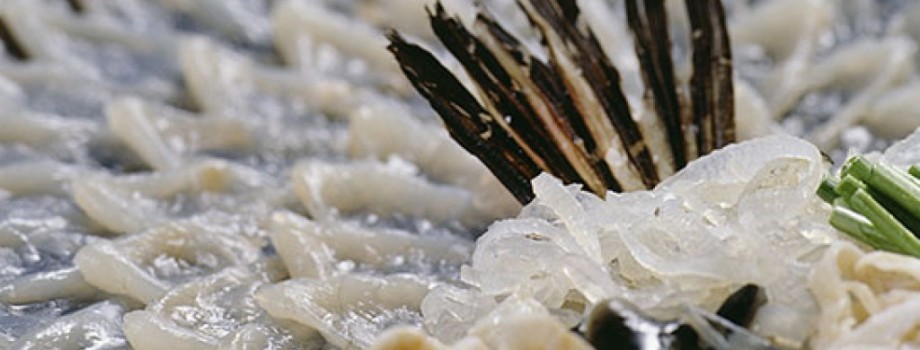It is estimated that each year in Japan, there are between 20 and 40 cases of poisoning courtesy of the fugu fish. Symptoms from poisoning include dizziness, exhaustion, headache, nausea, difficulty breathing and even death. Fugu is the Japanese name for the world’s most delicate, expensive and dangerous fish. Australians may know it better as the pufferfish, globefish or blowfish. While illegal in most parts of the world, the Japanese consider it a delicacy and there are currently about 3,800 fugu restaurants in the country.
The fugu or pufferfish has more than 100 different types worldwide and each one of them is highly poisonous. The skin, the intestines, the eyes, the kidneys, the ovaries and above all, the liver are the most deadly parts. If you must eat it, it is recommended that only the “torafugu” variety be used, as this has the least amount of toxin in its blood. Alternatively, you can eat fugu from specially created aqua farms that promise poison-free fugu. (This takes some of the excitement out of eating it though.)
In order to prepare fugu, chefs must first train tirelessly, preparing hundreds of fish at a cost of thousands of dollars. Then and only then can they legally sell it in their restaurants. Chefs must be at least 20 years of age and generally train for between four and six years. But that is all about to change.
Despite the high risk that comes with preparing fugu, Tokyo’s city government has announced it is planning to ease restrictions that allow only highly trained chefs to serve the dish. Potentially, chefs that study for just one day will now be able to sell the deadly fish, so long as they purchase from suppliers with the venomous parts removed. With fugu starting at around $120 a head this is great news for many new chefs, but for the likes of Kunio Miura, who has been perfecting the art over 60 years, it is a great concern. Even after 60 years, he is still cautious when cutting open fugu.
With so much concern surrounding one fish, why eat it?
In restaurants, fugu is usually eaten raw as sashimi, cut into very thin slices and commonly presented as a flower. It’s mostly served in the wintertime in order to avoid increased levels of toxicity generated as a reproductive defence mechanism.
When served as sashimi, fugu is delicate, gelatinous, delicious and doesn’t smell “fishy”. It also has the most umami (the savoury flavour you get with monosodium glutamate) of all the fish.
Occasionally, other parts of the fish are eaten, but it is these parts in where the danger lies. In 2009, seven daredevil diners in Tsuruoka City were struck down with severe poisoning following a night of eating grilled fugu testicals. In 1975, Kabuki actor Bando Mitsugoro VIII famously died after eating four servings of fugu liver. In 2012, two children aged two and three were killed after being fed fugu for lunch in Jomalig, Quezon and in the same week, two Sagay City fishermen died and nine were hospitalised from having eaten the skin.
Since 2000, 23 people in Japan have died as a result of fugu according to government figures. Figures from the Fugu Research Institute show that 50% of victims were poisoned by the liver, 43% from the ovaries and 7% from the skin. Nearly all of these fatalities were a result of home preparation.
How do you prepare fugu?
The main point of preparing fugu is to remove all signs of tetrodotoxin, which is generally found everywhere but the flesh. Tetrodotoxin is rapid and violent, causing numbness around the mouth, paralysis and finally death. It is said to be 1,000 times more potent than cyanide and there is of course no antidote.
While the preparation of fugu should be left to professionals and you should definitely not try this at home, it’s interesting to know what steps the chefs need to follow to ensure the fugu is safe for eating.
Step 1: Remove the skin (there are no scales). Cut around the mouth and from there, pull the skin off.
Step 2: Wash off the jelly using salt.
Step 3: Remove the eyes.
Step 4: Using a good, sharp knife, gut the fish being very careful not to puncture the ovaries or liver. Should these burst, the toxins will be released into the flesh making the fish inedible.
Step 5: Cutting against the bone, fillet as you would any other sashimi.
Step 6: Cut the head into two or three pieces and boil. This can be used for a stew.
Fugu is definitely the type of delicacy that people travel to try – just make sure if you do try it, it’s been prepared correctly by someone with the right training.






 (97 votes, average: 4.14 out of 5)
(97 votes, average: 4.14 out of 5)